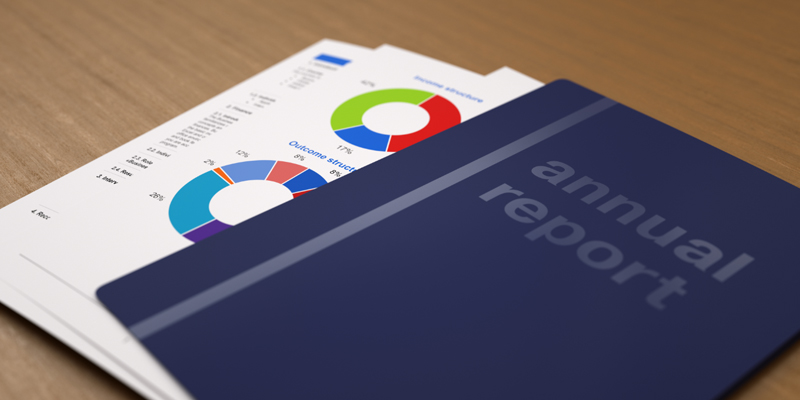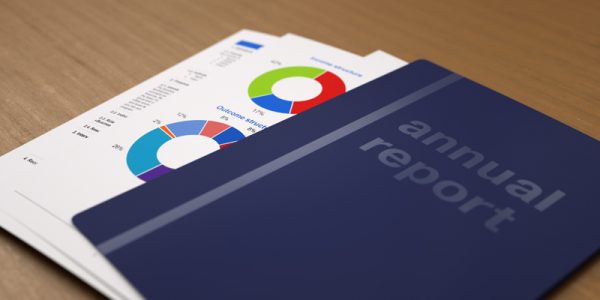An annual report is a summary of a company’s financial state at the end of its business year. It’s a staple for large corporations, especially if their shares are publicly traded (i.e. listed on the Nigerian Stock Exchange).
But periodic reporting on business performance isn’t a bad idea for SMEs either. Having a comprehensive overview of your venture’s financial situation over a length of time could prove useful to you in many ways. For instance, it helps you know whether you’re on track to achieve your business’s medium or long-term goals. There’s also that measure of order, discipline and professionalism that it bestows on your enterprise.
You might take issue with our suggestion that small businesses could use a year-end report on the grounds that they would be just fine with balance sheets and cash flow statements. Maybe all they need is a slim pamphlet that interprets the numbers in their financial books. But even this could count as an annual report if it has the essential elements of such a report in it.
We should add that if your company is publicly traded, your report will have to comply with regulatory authorities’ basic requirements. You’ll need to follow a fairly definite template, and your final document will almost certainly be lengthier.
In this article, we’ll assume that you’re writing a report like something expected of companies listed on the NSE. The steps we outline can nevertheless be adapted for use by small businesses that want to keep detailed but briefer records of their financial situation.
Things to Bear in Mind
- Remember why you’re writing the report. You want to have a good picture of your business’s financial position at the end of the year. Keep the focus on this goal. Trim down or cut out material that doesn’t ultimately help you achieve this.
- The report should be written in language that’s easy to understand. Avoid cliches, and don’t use technical jargon unless it’s absolutely necessary to do so. You don’t want your readers abandoning the document after reading only a few lines.
- You may need the services of financial experts and business writers (or editors) to make an end of year report.
- Stay as faithful as possible to the facts as you’ve observed them over the past year. Padding numbers and writing less than truthful prose could land you and your company in trouble if you’re caught by the authorities.
- If your company’s shares are traded on the NSE, existing regulations stipulate that you make your annual reports publicly available. One way to do this would be to upload it as a PDF to your website.
Writing the Annual Report
Let’s go through the steps to producing an annual report that’s worth the public’s read.
-
Have Your Financial Records Ready
The annual report is mostly financial accounting with plenty of explanatory text. Of course, there’s a little more to it than this, but you can’t have a year-end document that doesn’t refer to (and explain) the numbers on your books.
A typical, NSE listed company’s annual report will have these statements incorporated into it: profit or loss, cash flow, and changes in equity. They could also include financial ratios that give a more snappy account of the business’s situation. Note that these statements are usually presented and treated in the latter part of a regular report of this nature. A tabular summary of the company’s financial state may appear quite early on as well.
Your accountant(s) should help with putting together the relevant records for the year-end report.
-
Invite Auditors to Review Your Records
This is standard procedure. Remember the point we made about presenting honest data? This measure is intended to make sure you adhere to it. You could have representatives from an audit firm to evaluate your accounts, and do a report confirming that they present your company’s situation fairly enough.
A copy of the auditor’s report is usually included in an annual report as evidence that its figures have been checked by professionals other than the company’s own accounts department.
-
Prepare the Chairman’s and Director’s Reports
As a rule, the chairman’s and director’s reports- two different materials -appear at the first couple of sections of the annual report. If you read these in any business year-end document, you could almost picture company bosses stepping up to the public to give the public a review of the performance of their businesses.
A chairperson’s review, which typically comes first, discusses the economic environment in which business has been done in the past year, lays out a swift summary of operating results, talks briefly about the profits gained and losses incurred, and mulls the company’s future prospects.
A director’s report may contain a description of the legal form of the company, information concerning the payment of dividends, as well as the company’s charitable works and execution of its corporate social responsibilities in the period under review.
-
Provide Notes on the Financial Statements
The Notes on Financial Statements is usually the lengthiest of the sections in an annual report. These notes are copious table-by-table explanations of the financial statements laid out in the document. They also bear out the implications of the figures presented for the company.
-
Include Other Useful Information
An example of this would be a four (plus) year financial summary showing your company’s performance over time in the numbers that really matter. Staff strength and shareholder information are other things you may want to include at the tail end of the report.
-
Add Some Colour
Some end of the year reports are just plain black ink on white paper. Unless you’ve had a loss-making year, you should be making your report more colourful. It’s a way to compensate for the endless number of tables and jargon (the ones you couldn’t avoid using) that your document already is.
Put some colour photos into the text ridden pages to make them more lively. Use shades of the same colour (not black or white) in one table, and do the same using different colours on other tables. Infographics can also portray your data in a more accessible way.
-
Edit Until It Flows
You won’t have your final draft at the first time of asking. It might take you a few rewrites and edits to come up with a report that’s readable by more people than just accountants. You will need even more time to create one that your shareholders can digest fairly easily. Just stay on it, until what you have is good enough to be put out to the public.
What’s a good annual report like? It’s a document that has the things we’ve noted in this article and proceeds logically with a flow that’s easy to grasp and keep track of.


